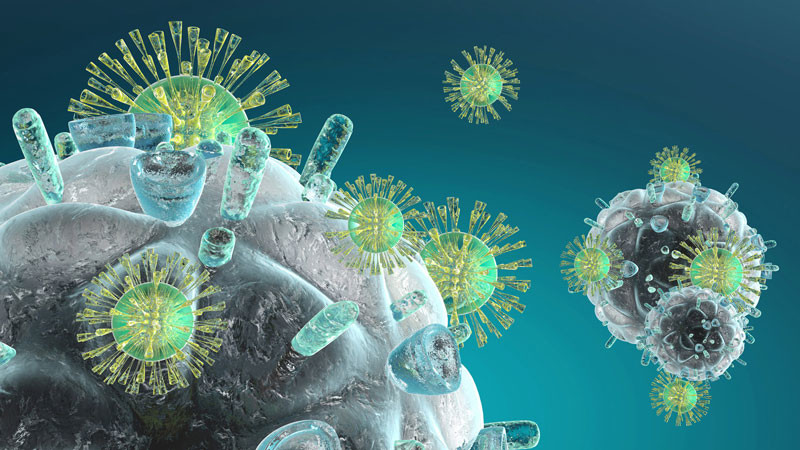Researchers have reported positive phase 1 trial results for a modified monoclonal antibody aimed at preventing HIV-1 infection. This development contributes to ongoing efforts to find antibody combinations that could both prevent and treat HIV.
With no approved vaccine yet available, current HIV prevention strategies rely heavily on antiviral preexposure prophylaxis (PrEP). One promising advancement in this area is lenacapavir, a form of PrEP administered via injection twice a year, with an FDA decision on approval anticipated soon. However, scientists are also exploring other prevention avenues, particularly monoclonal antibodies designed to attach to the HIV virus’s outer envelope and block infection of human cells.
Previous trials with a single monoclonal antibody, VRC01, showed that antibody-based prevention is feasible but did not produce the desired level of protection. This has shifted the focus toward using combinations of monoclonal antibodies—known as antibody cocktails—that target multiple sites on the virus’s envelope for more effective neutralization.
Among these candidates, PGDM1400 stands out for targeting the V2 apex of the HIV envelope, a crucial but less commonly targeted region. PGDM1400 shows activity against various HIV subtypes and may be especially potent against subtype C, which is the most widespread strain causing infections in sub-Saharan Africa. The major limitation of PGDM1400, however, is its relatively short half-life in the bloodstream, which would require frequent dosing.
To address this, researchers modified PGDM1400 by substituting lysine-serine amino acids in its Fc region to extend its persistence in the body. This engineered version, called PGDM1400LS, was tested in the phase 1 trial reported in The Lancet HIV. The study involved 15 participants divided into five groups, receiving different doses either intravenously or subcutaneously.
The results showed that PGDM1400LS was safe and well tolerated. The most serious adverse event was localized skin redness and swelling in a participant who received the highest subcutaneous dose, which resolved within 22 days. This reaction did not prevent continuation of subcutaneous dosing for other participants, all of whom tolerated the injections without significant issues.
Crucially, the modification succeeded in extending the antibody’s half-life to a median of 55 days, two to three times longer than the original PGDM1400. This longer half-life could mean fewer doses needed to maintain protective levels of the antibody in the blood.
The neutralization potency of PGDM1400LS was comparable to its parent antibody, demonstrating broad HIV-1 neutralization capacity, including against clade C viruses. Higher doses corresponded to greater neutralization activity. Pharmacokinetic measurements showed that antibody levels peaked soon after intravenous infusion and somewhat later after subcutaneous injection.
While intravenous administration showed favorable bioavailability, the subcutaneous route resulted in more modest absorption. The researchers noted that subcutaneous delivery, which is generally easier and could reduce costs, would require further development to improve bioavailability for monoclonal antibodies in adults before widespread implementation.
Overall, these findings support the potential of PGDM1400LS as a component in monoclonal antibody cocktails to prevent HIV infection. The longer half-life and sustained neutralization activity enhance its attractiveness as a candidate for less frequent dosing schedules, which could improve adherence and coverage in populations at risk. Continued research will focus on combining PGDM1400LS with other antibodies to target multiple viral sites simultaneously, aiming to create a robust, long-lasting barrier to HIV infection.

